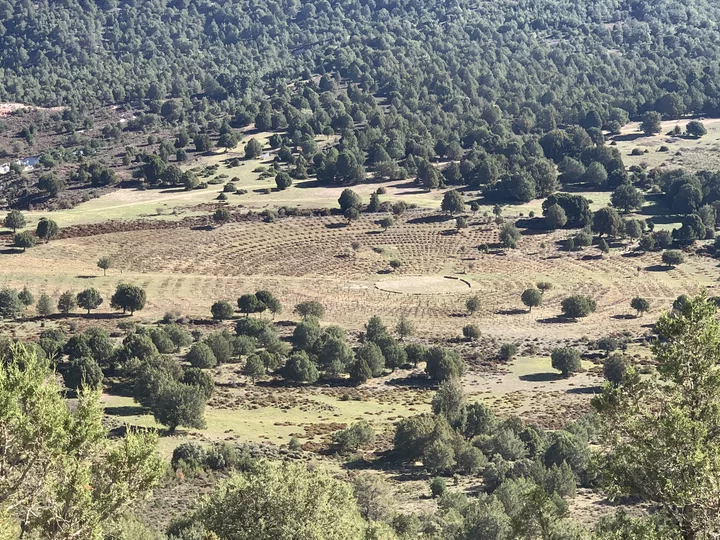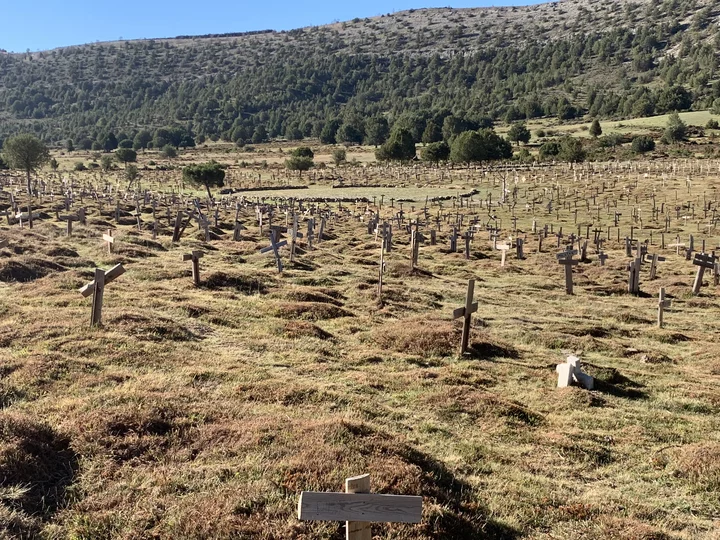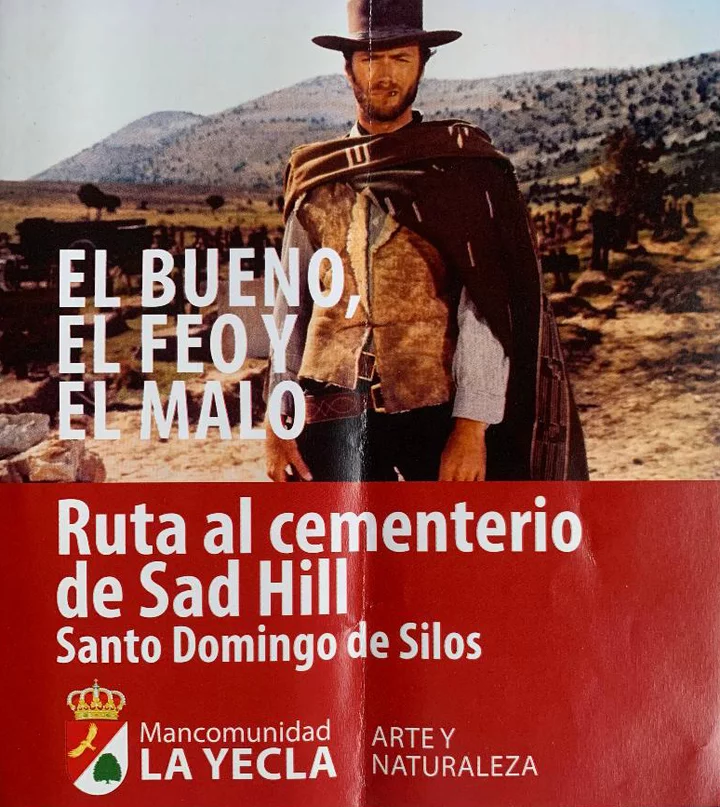“At
the start [in 2016] it seemed like it was going to be impossible, but
bit by bit people from other provinces of Spain, other towns, and
even other countries, came to help us rebuild the cemetery and it
snowballed.”
— David Alba, president of the Sad Hill Cultural Association
###
The Golden Age of “spaghetti westerns” lasted from 1960 to 1978, during which time over 600 European movies were made in a reformulating of the “oater” mold of such U.S. directors as John Ford, Fred Zinnerman, Anthony Mann and Howard Hawks. In contrast, spaghettis were international creations, typically with an Italian director (notably Sergio Leone, Sergio Corbucci and Enzo Barboni), Italian and/or Spanish technicians, German funding, and a mostly Italian and/or Spanish cast.
The first really successful spaghetti was Leone’s 1964 A Fistful of Dollars starring Rawhide’s Clint Eastwood as “The Man with No Name.” Leone and Eastwood, went on to complete a trilogy with A Few a Few Dollars More and, perhaps the greatest of them all, The Good, the Bad and the Ugly, shot in Italy and Spain between May and July 1966.
Mirandilla Valley, with the restored Sad Hill cemetery. (All photos by Barry Evans)
Whereas in American westerns, the good guy was really good and the bad guy(s) really bad (sometimes clothing them in white and black, in case you missed the point!), spaghettis tended to have far more nuanced characters. In TGTBATU, for instance, The Good (Clint Eastwood, “Blondie”) is an unshaven, cigarillo chewing, sarcastic antihero with a perpetual squint and for whom money rules. The Bad, “Angel Eyes,” was played by the great Lee Van Cleef (“The Best of the Bad” according to his tombstone), while The Ugly went to character actor Eli Wallach, veteran of nearly 100 films and dozens of Broadway plays. He was a founding member of the influential Actors Studio. In TGTBATG, Wallach steals the show as Tuco who, apparently, had two choices as a poor kid in Mexico: to be a priest like his brother or to follow his calling as a bandit. Watching this movie, I’m convinced these three talented actors were having the time of their lives playing such unscrupulous villains.
THTBATU is set in 1864, during the Civil War. The climatic 20 minutes of the movie takes place at Sad Hill Cemetery where thousands of Confederate soldiers are buried, along with $200,000 in gold. Tuco knows the name of the cemetery, while Blondie knows the name of the grave where the money is stashed (Arch Stanton) or, to be precise, the “Unknown” grave next to it. Leone and his set designer, Carlo Simi, chose remote Mirandilla Valley in the Spanish province of Burgos to stand in for the supposed New Mexico location. When we visited last month, it was still beautiful and wild, completely unspoiled by buildings, roads or power lines. Leone somehow arranged for 250 soldiers from an army barracks in Burgos to build the vast outdoor set: 5,000 graves in concentric circles surrounding an “arena” in which the final three-way duel (Triello) takes place.
I
love spaghetti westerns, and have given OLLI classes on them. I
promised myself that if I ever returned to Burgos (having passed
through the city years ago walking the Camino de Santiago), I’d
visit Sad Hill, even if it had been overgrown since 1966. I needn’t
have worried. In 2015-2016, a group of local movie buffs formed the
Sad Hill Cultural Association, spending their weekends to renovate
the site. Volunteers came from all over to join them, and today it
looks virtually as it did in 1966: a restored fake cemetery in Spain
created to look like a non-existent one built in New Mexico in 1862.
For full effect, watch this clip of Tuco searching for the grave of “Arch Stanton” to the backdrop of Ennio Morricone’s Ecstacy of Gold. Leone’s trick? He had Morricone compose the music before shooting began, so the movie was filmed to follow the music rather than usual sequence. Molto bello!




CLICK TO MANAGE